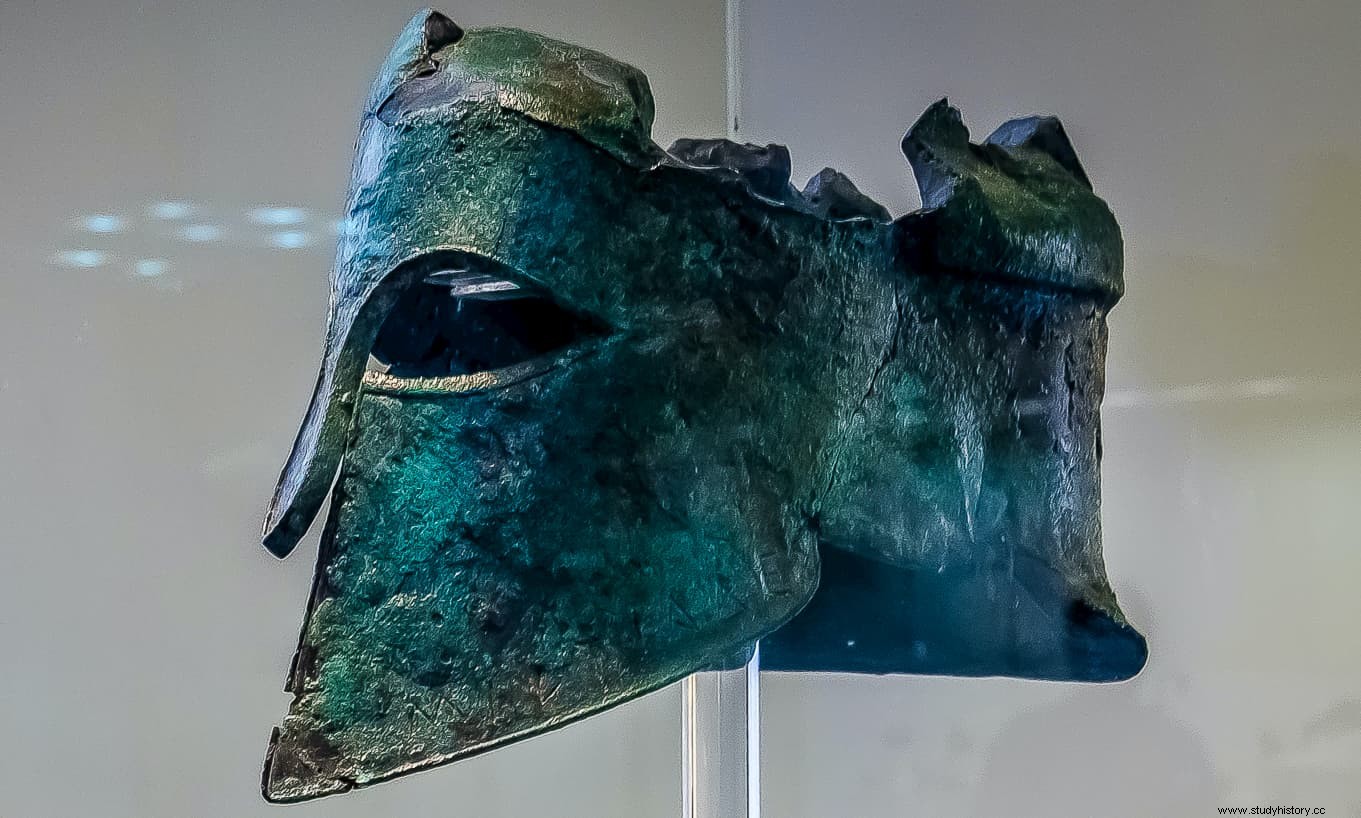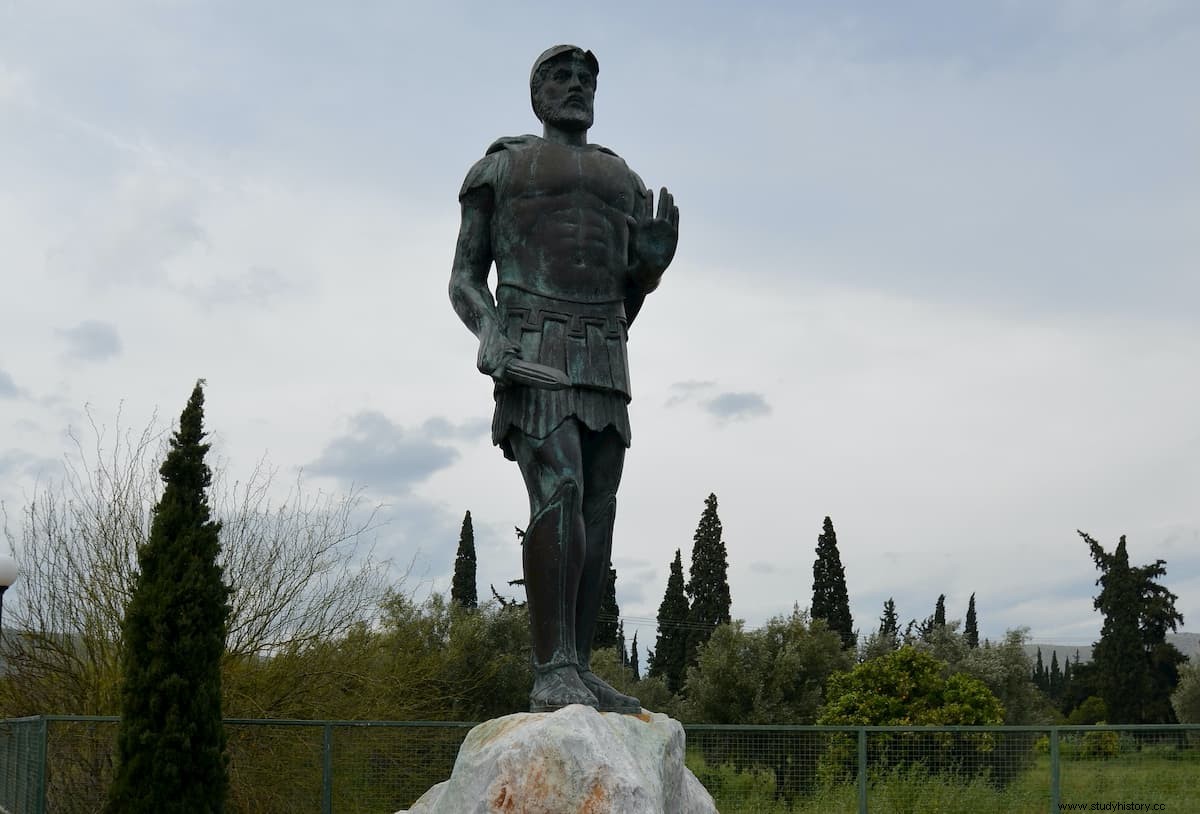The exact place where the archaeological site of ancient Olympia is located today was rediscovered in 1766 by the English antiquarian Richard Chandler. It was buried under 8 meters of alluvial deposits long thought to have been deposited by river floods.
But modern investigations have shown that, in fact, the sanctuary where the most famous athletic games of antiquity, the Olympic Games, were held, had been buried as a result of repeated tsunamis.

Chandler went to the Elis guided by the descriptions of Pausanias, and there he located the temple of Zeus discovering parts of the cella and a Doric capital.
It would not be until 1829 when the first systematic excavations would begin. On May 10 of that year, French archaeologists Léon-Jean-Joseph Dubois and Abel Blouet undertook work on what was then a desolate land with no trace of buildings.

In 1875 the German Archaeological Institute would take charge of the excavations and, little by little, the main structures and enclosures would come to light. One of the German archaeologists who joined the team in 1936 was Emil Kunze.
After the Second World War he returned, already as director of the Institute, to take charge of the work that Alfred Mallwitz joined in 1952. Together they excavated the Leonideo and the north wall of the stadium. In the southeastern section of the sanctuary, they found 140 rubble-filled pits, containing many bronze, ceramic, and terracotta objects.
Between 1954 and 1958 they undertook the excavation of a Byzantine church that had been built in the middle of the sanctuary. There they found remains of ivory, semi-precious stones, glass ornaments and numerous sculptor's tools. Excitement seized the archaeologists, who already suspected that this could be the place where the great sculptor Phidias had created the famous chryso-elephantine statue of Zeus. Confirmation of the sensational discovery came with the discovery of a small ceramic pot with an inscription that read:I belong to Phidias .
But it would not be the only or the last surprise that they were going to take. In 1961, during the final excavations of the stadium, hundreds of weapons and pieces of armor were found in the earth covering the embankments. They came from the trophies erected there by the Greek polis, composed of the spoils obtained in battle, and dedicated to Zeus.

Among all the objects there was a helmet, a Corinthian helmet, which was missing the upper part and differed little from the rest of the helmets found at the site. Except for one detail. It bears a dedication that reads:ΜΙΛΤΙΑΔΕΣ ΑΝΕ(Θ)ΕΚΕΝ (Τ)ΩΙ ΔΙ (dedicated by Miltiades to the god Zeus ).
At first there was some controversy as to which of the two famous Miltiades could be the one who had dedicated the helmet in the sanctuary. However, today the consensus of scholars is that it is the Athenian politician, general and archon born in 550 and died in 488 BC. None other than the strategos who led the Athenian army at the Battle of Marathon.

The fact that the dedication is certainly unusual, omitting both the affiliation of the dedicator and the name of the enemy, can only mean that the battle in question was so famous that the name of the victorious Athenian commander sufficed, because the rest went without saying. At least that's what A.J.Graham thinks. This would then be the helmet that Miltiades wore during the battle on August 12, 490 BC
As is known, on that day 10,000 Athenians and 1,000 Plataeans defeated a Persian contingent of about 25,000 men, led by ten strategists of which the main and most experienced was Miltiades the young. . It would be he who, on the fifth day after the Persian landing, proposed to engage in battle.

And it would be Miltiades who in fact would carry the weight of decisions from then on, because, as Herodotus continues, the rest of the strategists gave him the turn of command (pritany ).
The result of the battle was a Greek victory that would become epic, thanks in part to the story, centuries later, of Herodotus himself.
Only 192 Athenians and 11 Plataeans died that day, out of 6,400 Persians, according to Herodotus (modern estimates are somewhat higher, though still estimates).

The helmet dedicated by Miltiades at Olympia is made of bronze and, when worn, was crowned with a large crest which was attached to small metal hooks on the crown and back of the neck, which have not survived. On the side of the helmet, a small rivet hole can be seen, just below ear level, where the chin strap was probably attached to prevent it from falling off. Inside it had to have a felt lining to cushion contact with the head.
Broken and damaged as it is, this 2,500-year-old helmet is the most valuable of all that can now be seen as part of the permanent exhibition at the Archaeological Museum of Olympia.
